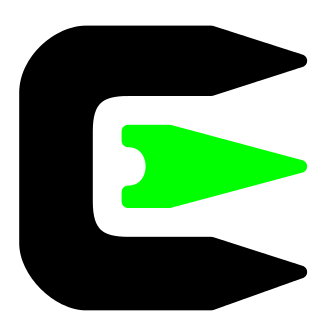| Developer(s) | Chad Walstrom |
|---|---|
| Initial release | 1992 [1] |
| Stable release | 4.2.0 / February 28, 2015 |
| Written in | C |
| Operating system | Cross-platform |
| Type | Bug tracking system |
| License | GPL |
| Website | www |
GNATS is the GNU project's issue-tracking software.
GNATS is a set of tools for tracking bugs reported by users to a central site. It allows problem report management and communication with users via various means. GNATS stores all the information about problem reports in its databases and provides tools for querying, editing, and maintenance of the databases.
GNATS is free software, distributed under the terms of the GNU General Public License.
GNATS is used by GNU packages [ citation needed ] and NetBSD. [2] [3] The Apache Software Foundation used the software from 1996 to 2002, [4] and the Mutt project until 2006. [5] It is also used, or was used in the past, by the FreeBSD Project, OpenBSD, Juniper Networks, Nordic Optical Telescope, CERN, Green Bank Telescope, NRAO AIPS++, European Software Institute, and the BaBar Project at SLAC. [6]
In early June 2014, FreeBSD announced concrete plans to migrate from GNATS to Bugzilla, claiming that Bugzilla supports finer granularity for categories and keywords. Furthermore, the announcement states that GNATS is missing many features that people expect from a modern bug tracker. [7]
It has been described as having been "the cornerstone" of free software bug-tracking systems. [8] [9]
GNATS was written by Heinz G. Seidl of Cygnus Solutions, inspired by BSD Unix's sendbug and filebug programs, and had its first stable release in 1992. [1] Initially, its only interface was via email, but multiple web and graphical interfaces were later added. [6] During the 1990s, other Cygnus employees rewrote it, and a further major rewrite was done for release 4, with other features contributed by users. [1] [10] [11] [12]
Although GNATS is still in use, development slowed since the 4.1 release in 2005. [13] Several changes lingered in the developers' source code repository, and a 4.2 release was discussed in 2012 [14] but no official release was made until some further development, leading to release 4.2.0 on 28 February 2015. [15]
Built as a client-server architecture, GNATS works with many interfaces (described below) including email, command line, and web interfaces. All GNATS databases and configuration can be stored in plain text files, which helps in the modularity of GNATS. Categorisation and recategorisation of bug reports is particularly simple. [16]
Four official interfaces exist for GNATS: [17]
Apart from these, custom ones can be developed such as OpenBSD's sendbug interface which collects system information and submits Problem Reports via email.

Bugzilla is a web-based general-purpose bug tracking system and testing tool originally developed and used by the Mozilla project, and licensed under the Mozilla Public License.

Cygwin is a Unix-like environment and command-line interface for Microsoft Windows. The project also provides a software repository containing many open-source packages.

The GNU Debugger (GDB) is a portable debugger that runs on many Unix-like systems and works for many programming languages, including Ada, Assembly, C, C++, D, Fortran, Haskell, Go, Objective-C, OpenCL C, Modula-2, Pascal, Rust, and partially others.

XEmacs is a graphical- and console-based text editor which runs on almost any Unix-like operating system as well as Microsoft Windows. XEmacs is a fork, based on a version of GNU Emacs from the late 1980s. Any user can download, use, and modify XEmacs as free software available under the GNU General Public License version 2 or any later version.

Gnus, or Gnus Network User Services, is a message reader which is part of GNU Emacs. It supports reading and composing both e-mail and news and can also act as an RSS reader, web processor, and directory browser for both local and remote filesystems.

GnuTLS is a free software implementation of the TLS, SSL and DTLS protocols. It offers an application programming interface (API) for applications to enable secure communication over the network transport layer, as well as interfaces to access X.509, PKCS #12, OpenPGP and other structures.
The MH Message Handling System is a free, open source e-mail client. It is different from almost all other mail reading systems in that, instead of a single program, it is made from several different programs which are designed to work from the command line provided by the shell on Unix-like operating systems. Another difference is that rather than storing multiple messages in a single file, messages each have their own separate file in a special directory. Taken together, these design choices mean that it is very easy and natural to script actions on mail messages using the normal shell scripting tools.

GNU Ubiquitous Intelligent Language for Extensions is the preferred extension language system for the GNU Project and features an implementation of the programming language Scheme. Its first version was released in 1993. In addition to large parts of Scheme standards, Guile Scheme includes modularized extensions for many different programming tasks.
The following tables compare general and technical features of notable email client programs.
This article provides basic comparisons for notable text editors. More feature details for text editors are available from the Category of text editor features and from the individual products' articles. This article may not be up-to-date or necessarily all-inclusive.
The following tables compare general and technical information between a number of notable IRC client programs which have been discussed in independent, reliable prior published sources.

A crash reporter is usually a system software whose function is to identify reporting crash details and to alert when there are crashes, in production or on development / testing environments. Crash reports often include data such as stack traces, type of crash, trends and version of software. These reports help software developers- Web, SAAS, mobile apps and more, to diagnose and fix the underlying problem causing the crashes. Crash reports may contain sensitive information such as passwords, email addresses, and contact information, and so have become objects of interest for researchers in the field of computer security.
Notable issue tracking systems, including bug tracking systems, help desk and service desk issue tracking systems, as well as asset management systems, include the following. The comparison includes client-server application, distributed and hosted systems.

GNU Bazaar is a distributed and client–server revision control system sponsored by Canonical.
Debbugs is the software powering the Debian project's issue tracking system. Uniquely it doesn't have any form of web-interface to edit bug reports – all modification is done through email. Debbugs was mainly written by Ian Jackson, former Debian project leader.
GNU Emacs is a free software text editor. It was created by GNU Project founder Richard Stallman, based on the Emacs editor developed for Unix operating systems. GNU Emacs has been a central component of the GNU project and a flagship project of the free software movement. Its tag line is "the extensible self-documenting text editor."
Emacs, originally named EMACS, is a family of text editors that are characterized by their extensibility. The manual for the most widely used variant, GNU Emacs, describes it as "the extensible, customizable, self-documenting, real-time display editor". Development of the first Emacs began in the mid-1970s, and work on GNU Emacs, directly descended from the original, is ongoing; its latest version is 29.3, released March 2024.
The following outline is provided as an overview of and topical guide to the Perl programming language:
Copyright (c) 1992
NetBSD has switched from the BSD bugfiler to GNU GNATS to maintain our bug database. This change will allow NetBSD developers to track bugs throughout their life cycle
GNATS Bug Database Summary, Automatically generated on 5 Apr 2013 18:00:01 GMT
archive gnats bug reports (...) Note : this is archived material. The gnats system is no longer in use.
mutt bugs, which uses the "gnats" problem tracker. An example URL is:http://bugs.mutt.org/cgi-bin/gnatsweb.pl(...)
A web interface and various modifications known as WWW Gnats has been developed by Danks and others. Various authors have modified the system for their own use
Bugzilla supports finer granularity for categories and keywords and over time we will adopt more of these, making it easier to filter bugs into specific target areas. It is now easy for multiple people to track a single bug, without having to have them assigned to custom mailing lists, add attachments to bugs, and so on. Many features that people expect from a modern bug tracker are simply not present in GNATS.
The GNATS/PRMS Gnu Bug Tracking System has been the cornerstone of Free Software bug tracking systems. The core is command-line, e-mail based, allowing additional tools and GUI wrappers to be created for it. These include wwwgnats, a web interface, and TkGnats, a Tk interface.
The GNU GNATS has been the cornerstone of open-source bug-tracking systems. (...) The core is command-line, email-based, allowing additional tools and GUI wrappers to be created for it. These include wwwgnats, a Web interface, and TkGnats, a Tk interface.
Cygnus is a commercial supplier and supporter of GNU software. (...) Among the packages released by Cygnus are `gdb', `gnats', (...)
This is a version of wwwgnats.pl which I modified for our use here at Progressive Networks.
Authors: Dan Kegel dank@alumni.caltech.edu & Huy Le huyle@alumni.caltech.edu
GNATS News: March 6, 2005: GNATS 4.1.0 has been released!
On Saturday, the 19th of January, Joel, Alex, and I will be collectively hacking on GNU GNATS with the following goals in mind: (...) * Cut the 4.2.0 version - which has been hanging out on CVS for years now.
After 10 years, GNU GNATS has finally released a new version 4.2.0
The advantage of GNATS over several other issue tracking system are : (1) GNATS offers client/server interface (...) (2) GNATS allows 'relocation' of issues or bugs (...) (3) GNATS uses a file-based back-end database (...)
Several client applications can be found in the GNATS distribution. The most important are Gnatsweb (a WWW interface to GNATS), TkGnats (a Tcl/Tk based interface), a GNATS mode for Emacs and XEmacs, and send-pr (the traditional command line interface that sends a PR by e-mail).